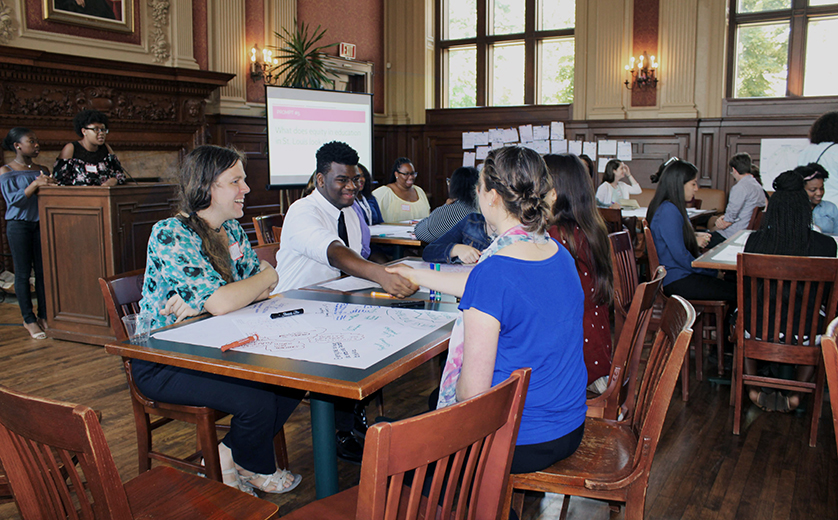This summer, with the help of the Brown School’s Social System Design Lab (SSDL), St. Louis-area high schoolers gathered to explore the topics of educational equity using system dynamics.
The fourth Changing Systems Youth Summit, which took place June 25 to June 28, created a space for 40 participants from 15 area high schools to search for solutions, informed by their own experiences in the education system. The use of system dynamics, a method of modeling complex problems, provided a powerful tool for uncovering the structures that produce the outcomes we see in educational institutions. The summit partnered with SkipNV, an agency focused on co-designing strategies to build equity in education with communities.
The event was co-designed and facilitated by youth leaders, who were trained by the SSDL for three weeks prior in systems thinking and facilitation skills. These teens then engaged other area youth in the process of group model building over the four-day summit.
The group used tools of Community Based System Dynamics (CBSD) to better understand the education system in the region, and begin to design solutions. The participants highlighted building school environment, the impact of mental health and the quality of teachers as key points in the conversation.
“Being a part of this summit has opened me up to so many different perspectives about education, said Antwine Willis, an incoming senior at Saint Louis University High School. “Going back to school this fall, I think it will be easier to see the different types of inequity that exist—and now I want to do something about it.”
At the end of the four days, students shared their findings with members of the Brown School and the local community, including regional nonprofit leaders working on similar issues. Audience members were given the opportunity to enter into discussion facilitated by the students through an interactive format called “World Café”. Youth participants and adult audience members engaged in conversations about the purpose of education and potential leverage points for change, among other topics.
“More than anything, I think we learned that we can’t be afraid to speak our truth,” said Willis, “We are the ones experiencing the shortcomings of the education system, and we need to be the ones to inspire the change.”
This is the fourth Changing Systems student summit held by the SSDL. Past topics have included racism, gun violence and youth homelessness.
“During the Changing Systems Summit, it’s our time to listen as young people in St. Louis lead the charge in problem-solving on the issues that affect them the most,” says Project Coordinator Allie Simpson. ” CBSD offers a set of tools for teens to speak openly with each other as well as engage with adults in the community about complex problems. The priority is that youth voice has a spot at the table.”
To learn more about the Social Systems Dynamics Design Lab visit: socialsystemdesignlab.wustl.edu.
